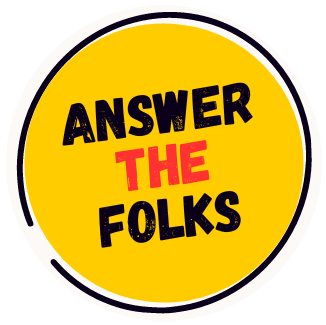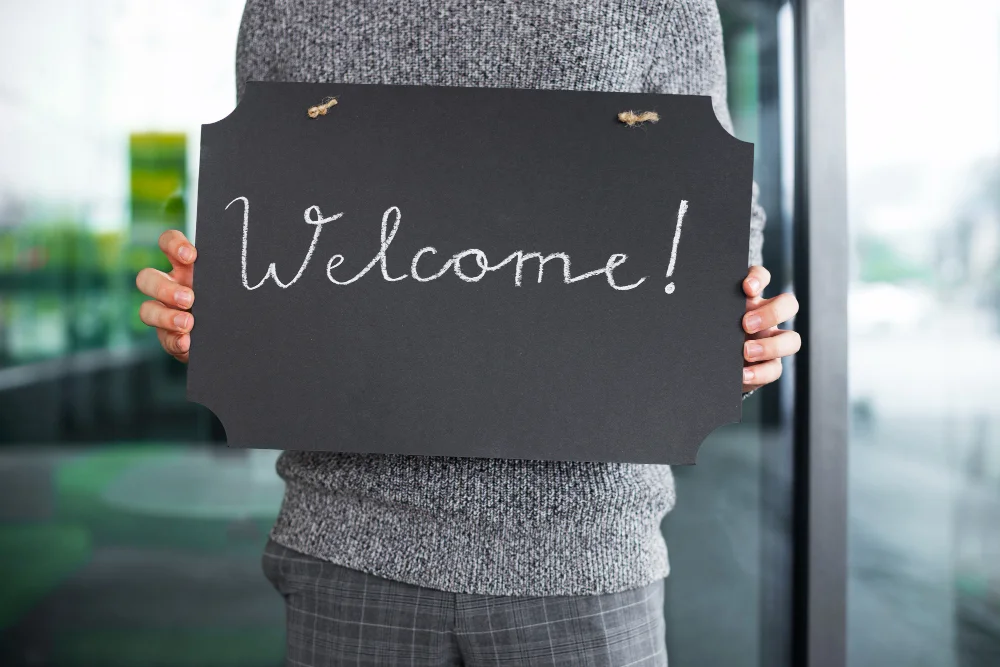Effective Communication: Different Ways to Say “You’re Welcome”
The Importance of Responding Appropriately
As communicators, it is important we respond to thanks in a polite and thoughtful manner. A simple “you’re welcome” can suffice in many cases, but mixing it up keeps conversations lively and shows our gratitude in return. In this post, I will share some fun and unique ways to respond when someone says thank you.
Growing up, I was always taught it was rude not to acknowledge thanks with a response. However, over time I realized the same basic “you’re welcome” could come across as mundane or impersonal. I started looking for more creative alternatives to show I truly appreciated the sentiment without just going through the motions. This led me down a path of discovery trying out different phrasings in various contexts.
Through trial and error, I’ve noticed certain replies tend to land better depending on the circumstances or type of relationship. The key is reading the situation and choosing a response that feels natural while still conveying thanks in return. With some social finesse, we can take an everyday exchange and make it feel more meaningful.
Getting Creative with Your Replies
“My pleasure”
When the thank you feels more sincere, responding with “my pleasure” shifts the focus back on how the interaction benefited you as well. It has a polite warmth that goes beyond basic politeness. I’ve found this phrase works well for favors between good friends or colleagues where you genuinely enjoyed helping.
For example, if a coworker thanks you for covering their shift one weekend so they could attend a family event, saying “my pleasure, I’m glad I could help you out” conveys your attentiveness to their needs. Compared to a simple “you’re welcome,” it shows you value the relationship.
“The pleasure was all mine”
Taking it a step further, “the pleasure was all mine” emphasizes how much you derived satisfaction from the act itself. I use this response sparingly as it can come across as over-the-top sincere. But in the right context, such as helping an elderly neighbor with yardwork, it lets them know you found fulfillment in being able to assist.
The extra effort in the phrasing pays respect to their appreciation and makes clear you don’t view it as an obligation or favor but rather something you gain from as well. It’s a great way to build stronger bonds in the community.
“Don’t mention it”
For casual acquaintances or strangers, saying “don’t mention it” in a friendly tone keeps an interaction light while still acknowledging their thanks. It implies it was really no big deal and they needn’t feel obliged in any way.
As an introvert, I personally prefer lower-key responses that don’t require lengthy back-and-forths with unfamiliar people. This phrase strikes a nice balance of politeness without encouraging drawn-out conversation. And it leaves things on a positive note rather than an abrupt cutoff.
“Think nothing of it”
Similar to “don’t mention it,” saying “think nothing of it” conveys the act deserves no further thought from their end. I’ve found it works well in professional scenarios when someone thanks you for a basic courtesy, such as holding a door open. It maintains decorum without making a bigger deal of a small gesture than necessary.
The subtle difference from “don’t mention it” is that “think nothing of it” implies they need not waste mental energy being grateful either. It helps keep interactions efficient when you both have places to be. Altogether an appropriately polite yet brisk response.
Responding Based on Relationship
For close friends and family:
With those closest to you, feeling free to be silly, sarcastic or playfully dismissive shows your deep comfort and trust. Phrases I use for good friends include:
- “You’re quite welcome…now do my chores for me!” followed by a wink or laugh.
- “Yeah yeah, don’t get mushy on me.” Said in a lighthearted teasing way.
- “No problem boblem!” Very casual and informal.
For family, I like saying things like “what are sisters/brothers for?” or “you know I’ve always got your back.” The warmth and care in those responses resonate more personally.
For casual acquaintances:
Keep it polite yet low-key as discussed above with “don’t mention it,” “think nothing of it” etc. Avoid overly personal phrasings that could come across as too familiar too soon. Respect appropriate social boundaries based on the current relationship level.
For clients or customers:
Come from a place of professionalism using standard business manners. Some go-to responses include:
- “You’re very welcome.” Straightforward yet courteous.
- “It was my pleasure to help.” Focuses on service quality.
- “Glad I could assist you with that.” Affirms value of the interaction.
Small gestures like these help nurture customer loyalty and satisfaction over the long run.
Incorporating Humor For Lighthearted Moments
In less formal settings, a sense of humor often lands better than robotic politeness. Here are some funnier ways I’ve responded that added humor to an exchange:
- “No problemo amigo!” – (having exaggerated Mexican accent)
- “You’re gratefully thanked!” – playing on words
- “You’re so very welcome-ed!” – in a mocking thankful tone
- “All in a day’s work Miss Moneypenny!” – for ladies, in a James Bond-esque way
- “Think nothing of it McFly!” – referencing 80s movie that certain people appreciate
Of course, gauge the situation carefully. Silly or exaggerating responses require a level of comfort and readability between people. But in the right context among friends, a humorous spin keeps conversations light and lively. Laughter has a way of strengthening bonds like little else.
Applying It In Different Scenarios
Let’s explore some examples of how to apply these various response styles appropriately based on scenario:
At a community fundraiser: When a little old lady thanks you for your donation, saying “The pleasure was all mine, I’m glad I could contribute.” shows thoughtfulness.
At the coffee shop: When the barista thanks you for your patronage, “Don’t mention it, thanks for the great coffee!” keeps it casual yet friendly.
Helping a coworker: If they thank you for explaining a work process, “My pleasure, let me know if you need anything else!” opens the door to further assisting.
With close friends: If they thank you for making dinner plans, you could reply in a playful tone with something like “Don’t mention it, the least you can do is clean up afterwards!” Responding humorously conveys your comfort and familiarity with one another, while still acknowledging their gratitude in a lighthearted way. With trusted friends, feeling free to tease or jest when saying thanks shows the easygoing nature of your relationship.
Interacting online: When someone compliments your social media post, keep it brief with “Thank you!” to avoid drawn-out back-and-forths.
Things to Consider
There are a few things to keep in mind when choosing how to respond to thanks:
- The relationship level – Be mindful of appropriate intimacy based on how well you know someone.
- Context of the interaction – Consider if it was a small courtesy or major favor when deciding formality.
- Your mood and energy – Go for lighter, humorous replies only if you have the social bandwidth.
- The other person’s disposition – Watch for cues on their receptiveness to different response styles.
With practice over time, you’ll gain intuition around which phrasings fit various situations best. The goal is to acknowledge thanks respectfully while keeping exchanges natural and engaging through subtle social cues.
Handling Thank You’s Graciously
Overall, responding to thanks is an opportunity to reflect gratitude in return through our word choice. Whether keeping it simple yet polite, inserting humor, or finding ways to re-center the focus on mutual benefit – choosing responses thoughtfully helps strengthen relationships both professionally and personally.
With some finesse tuning into context and social dynamics, we can elevate ordinary thank you exchanges into memorable mini-interactions. After all, life is made rich through human connection, and even small acts of kindness deserve celebration. So let’s keep paying thanks forward by handling them with grace, care and creativity whenever possible.
Related: How to Respond to Thank You
FAQs
What if I didn’t do much – can I still acknowledge their thanks?
Yes, a thank you is an expression of appreciation for the sentiment regardless of how big the act was. Simply responding with “You’re very welcome” or “No problem” maintains good manners.
Is it bad to say “no problem” when someone thanks me?
While “no problem” gets the job done, some see it as minimizing their thanks or implying it was trivial. Politer options are “You’re welcome” or “Don’t mention it” to avoid any unintended dismissal of their gratitude.
What if I don’t know what to say in the moment?
It’s okay to smile and nod if caught off guard. You can also buy time politely saying “It was my pleasure” or “You’re most welcome” before changing the subject respectfully. The key is acknowledging their appreciation, even if brief.
What if I feel uncomfortable with compliments or praise?
While self-effacing responses like “It was nothing!” can undermine their expression of thanks, a simple “You’re welcome” or variation avoids prolonging discomfort. You can also redirect politely by saying “I’m glad I could help” and smoothly steering conversation elsewhere.
With practice over time, most become more at ease acknowledging compliments gracefully versus deflecting. But there’s no need to force comfort – focus on conveying appreciation for their thoughtfulness in a way that feels sincere yet not overly attention-seeking. With experience, you’ll gain poise handling a range of social interactions.
How can I respond non-verbally if in a hurry?
When rushed, a friendly smile along with a small head nod or wave of acknowledgment still conveys you noticed and appreciate their thanks, even without words. Reading the situation, a brief hand gesture may suffice if time is limited versus lingering in an disengaged way. The goal is recognition over brevity if pressed.
What if they say thank you in another language?
Cross-cultural dynamics can understandably feel delicate. If unsure how to respond in kind, sticking to a simple “You’re welcome” displays respect for their meaning regardless of pronunciation. With an earnest smile, the sentiment still shines through even without perfect phrasing. Your openness speaks volumes.

